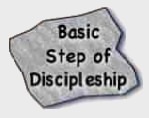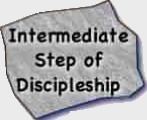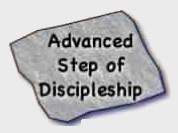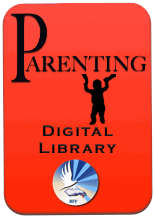

Godly Beginnings for the Family
Paul and Linda J. Bucknell
Godly Beginnings for the Family Index
Starting Families Right | Family Commitment | Family Planning | Husband & Wife Roles | Family Health Plan | Preparations for Childbirth | Tender Newborn Care | Challenge of Child Training | Disciplining & Training Small Children | Setting up Godly Routines
Disciplining Training Small Children
Purpose
Disciplining Training Small Children helps to understand biblical discipline and how it is carried out on little children at different stages of life using different scenarios such as feeding, etc. This is part of the book: Godly Beginnings for the Family.
Learning how to care for infants, before, during and after birth!
A) Understanding Biblical Discipline
B) Training at Different Stages of Life
 Once we have caught God’s vision for us to raise godly children in this immoral world, we need to adjust our training methods. There are two parts to Biblical child training: physical correction and instruction. Leave one out, and it is no longer Biblical.
Once we have caught God’s vision for us to raise godly children in this immoral world, we need to adjust our training methods. There are two parts to Biblical child training: physical correction and instruction. Leave one out, and it is no longer Biblical.
(1) Physical correction restrains the expression and development of the child’s foolish heart.
(2) Positive instruction trains the child to do the right thing with the right attitude.
Many parents no longer think that they can truly influence their children’s life and behavior. Nothing is further from the truth. All of the proverbs that address the issue of child training confirm the parents’ awesome sphere of influence and responsibility to train their children. If the parent fails to train the child by neglect or improper procedures (such as not utilizing physically correction), then the child will suffer the consequences.
After describing biblical discipline and its goals, this session will give you practical helps on how to train a child from the baby stage up through the toddler stage and beyond.
A) Understanding Biblical Discipline
Although the concepts of biblical discipline are clear, our English words are not. Part of the problem is the difference of meaning and associated connotations of some words. Also part of the difficulty is that for some of the key biblical terms there is no good modern English equivalent translation.
(1) The verb ‘to discipline’ is used to refer to both the physical correction as well as the pursuit of having a ‘well-disciplined’ or trained child. Unfortunately many people understand the word ‘discipline’ to mean only spanking, hitting or beating.
(2) The word ‘chastise’ can also carry both meanings of correction and training but is rarely used now.
(3) So instead of creating another word, we will use the word ‘training’ to include both the physical correction and the instruction. When we use the verb ‘to discipline,’ it will more often than not refer to the aspect of physical correction. We will refrain from using spanking because it refers mostly to using a hand to inflict physical pain.
4) Instruction refers to the methods, ways, words and actions that a parent uses to help a child acquire habits, skills, self-control and obedience.
Biblical training always keeps the end goal in sight: the betterment of the child. This is the reason we like to use the word ‘training.’ An excellent image of training is the athlete who pushes (disciplines) his body hard so that it can accomplish what he wants it to. He does not exhaust his body for nothing. His goals are before him just as the training of godly children in this immoral world is before us. We need to win.
"And everyone who competes in the games exercises self-control in all things. They then do it to
receive a perishable wreath, but we an imperishable. Therefore I run in such a way, as not without aim; I box in such a way, as not beating the air; but I buffet my body and make it my slave, lest possibly, after I have preached to others, I myself should be disqualified" (1 Corinthians 9:25-27).
The word for buffet means to beat, treat roughly and discipline by hardships. The athlete is willing to go to such extremes so that he can win a temporary prize. In a similar way, the parent wants the child to mature. It will require pain at times. The pain is a small price to pay for the eternal reward of a well-trained child that loves God and others.
Godly Beginnings for the Family
Learning how to care for infants, before, during and after birth!
Click to order download (pdf) with study questions, footnotes, etc. or get the powerpoints and handouts.
Click here to view back cover! Smaller | Larger
Discipline, the infliction of physical pain, is a significant part of training our children. Raising children without discipline is like driving a car without oil. We won’t go far before destroying the whole car. We have a choice to do it right and cause our children to be blessings or to ignore God’s instructions in His Word and end up with an uncontrollable child.
We would hope that our child would act good enough not to need physical discipline, but all of our children, stained by their sin nature, reveal the need for more than just a good talking to.
Some parents do not like the idea of physical discipline because it reminds them of the many abuses they have either heard about or even experienced. We grieve with those who have suffered so. These stained images of discipline do not help. However, if a parent lives in fear of disciplining the wrong way, in the end this attitude will cause the parent to neglect discipline.
Other parents end up lashing out at their children after the frustration and anger have built up. They might hit their child to keep some form of personal sanity. In other words, the parents do not inflict pain upon the child to help the child but only to vent their own anger and personal need for peace and quiet. No wonder parents and children alike are so confused about discipline and many disregard it altogether.
Another kind of parent might think she is being kind or loving by overlooking the many small incidents of disobedience rather than dealing with them immediately. She has set herself up for big time frustration.
By allowing the child to continue to disobey, the parent is in fact training the child to disobey! In this case, the parent should have disciplined the child when he disobeyed the first time. The parent then could have disciplined the child without the pent up anger and agitation that she later exhibited. The parent would also be focusing on training the child to obey rather than to disobey.
The Bible says a lot about the discipline or chastening of a child. We can find clear-cut guidelines from God our Designer. Think of the Bible as a training manual on how to raise children. We would like to draw upon the numerous biblical principles on child training and discipline from the Book of Proverbs. We have grouped them under five general topics.
|
||||||||||||||
|
||||||||||||||
|
||||||||||||||
|
||||||||||||||
|
||||||||||||||
Conclusion
The differences between a child that has received discipline and a child that has not are astounding. God has clearly spoken how to train children in His Word. When the culture erodes or perverts a man’s sense of responsibility to train his children, then society itself will degenerate. God clearly rejects any method of child training that does not include discipline or physical pain. Discipline with a rod plays a key role in the training children need to become responsible adults.
B) Training at Different Stages of Life
Training and its necessary arm of discipline take on different forms at the various stages of life. The goals, however, do not change. There is also an important continuity between the different levels of training. In order to transition to the smooth training of a toddler, training must begin early in the baby’s life.
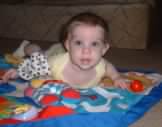 1) Infant to five months: Adjustments
1) Infant to five months: Adjustments
The child at this stage of life is both physically and emotionally immature. Although only a little infant, he is able to express his sinful nature. He is born with that bent to fulfill his desires. This foolishness is seen by his persistence in trying to get his own way. The baby’s one way to express his foolishness to his parents is through his cry.
The child will attempt to ‘gain his own way’ even from infancy. If the parent allows the child to control the circumstances to his own benefit, then he will become more difficult, though not impossible, to train. It is more difficult because the child’s nature works with the already formed habit of getting his own way.
There are three areas of training to be focused on at this age: feeding, awake and sleep times. If you are observant it covers all of his hours! The first thing we need to observe is that a rod is not necessary at this stage.
A baby cannot understand instruction. Without clear instruction, then there is no disobedience. The rod will come in handy later when the child begins to understand instruction. The infant, however, is trained by use of constraint. We simply do not allow the baby to get his own way.
 This might sound cruel, but it is not. The child does not know right from wrong, what he may or may not do. He learns by experimentation. If the results are pleasing, then he will do it again. We simply do not allow him to do those things that we do not want him to do. Of course, we cannot restrain his crying. Instead we make sure that we do not reinforce his crying by giving him what he wants. Let us provide a few examples from each area of life.
This might sound cruel, but it is not. The child does not know right from wrong, what he may or may not do. He learns by experimentation. If the results are pleasing, then he will do it again. We simply do not allow him to do those things that we do not want him to do. Of course, we cannot restrain his crying. Instead we make sure that we do not reinforce his crying by giving him what he wants. Let us provide a few examples from each area of life.
Feeding
The mother does not allow the child to hit her when feeding. She will constrain the flailing arms. Although the way the baby flings his arms might look cute at first, we know in the long run that it can be dangerous or at least troublesome. What the parent does not like, the parent does not tolerate.
The parent also does not feed the baby every time the he cries. The baby is seeking warmth and comfort. Although a feeding might provide that, we are giving into the wrong demands of the child.
Awake time
The child loves to be held. At first the child’s playtime, is very limited. Infants often don’t stay awake very long. When they are, they are often being held. But care needs to be given to find a time in the routine when the baby is put down to play. It might be in a playpen, bassinet or on a blanket. Again the baby might cry to be held. He is use to the mother’s warmth. But after affirming that there is no problem with being dirty and double checking that it is not nap time, just let him squirm and fuss a bit.
He will soon learn that there is no reward for his crying. Instead he will learn to be content being by himself. We only would caution, do not leave him there for long. Don’t make it so that he needs to cry to get your attention. Otherwise, we again run into the same problem. In this case we would condition him to cry to get picked up. Routines help so much here.
Sleeping
The mother will not keep picking the baby up even though he cries when put down to sleep. She has already determined that the child is sleepy and ready for a nap. She has changed the diaper and checked to make sure everything is okay. Now the baby needs to sleep. It is perhaps useful to think of it this way.
The baby has some extra frustration and needs to cry it out. When cried out (usually a few minutes), he will contentedly go to sleep. We do not let the child get his way of getting in a more comfortable position (such as the mother’s arms) just because he wants to. The mother either needs her rest or has other work to do. We do not need to spank the baby for crying. We let him cry for the few minutes, and he will sleep.
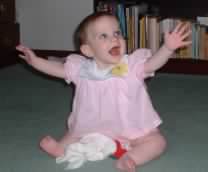 2) Six to twelve months: Mobile
2) Six to twelve months: Mobile
The child starts to crawl around six months and begins to walk at around one year. There is no need to worry if they start a few months earlier or later. Every child is unique. The difference between this stage and the first is that the young child is beginning to be mobile. The child will first learn to reach, roll over and aim for distant objects. In other words, they can begin to get ‘into’ things.
Children are so delightful at this stage as we watch their fascination with toys and their reactions to people. At the same time, however, we must remember that their sinful nature is developing and seeking ways to express itself.
As long as the child is not mobile, then he is pretty well protected. We only put the things around the child that they can touch. We do not put them near dangerous things or items that belong to others.
As they begin to roll, however, they can begin to maneuver themselves into areas that they can touch things that we do not want them to touch. We have a decision to make. We could move that object, but in that case the child has not learned how to respect the parent’s “no.” At this stage we will begin to train the child to obey our word.
Early on, you can say ‘No’ and thump his hand with your index finger when the child snatches your glasses. Or if while holding the baby on your lap at the table, he reaches to grab a plate or some other item. We need to calmly say, ‘No’ and constrain the child’s arm or thump him with our index finger. We are familiarizing him with the word ‘no.’ The baby needs to learn that there are some things that are off limits.
If we let them play with anything that they can reach, it will only be a few months when our living room will be totally rearranged. We will take every precious item out of there. We have a woodstove that gets very hot. We once asked a group of parents how we should deal with the child that was just starting to crawl. We got a number of suggestions. One suggestion was to not use it. Another suggested putting up a barricade all the way across the room! Others said that they would always need to be with the child. As far as I can recollect, no one simply said to train the child not to touch it.
 How do we train the now mobile child? Let us suggest a few steps. Remember that having constrained the child at an earlier stage will help him realize that some things are off limits. The child will already have learned to associate the word ‘no’ with certain things that they were not allowed to do. Now we need to take a few further steps. We will start using the rod when the child is mobile and can understand instruction.
How do we train the now mobile child? Let us suggest a few steps. Remember that having constrained the child at an earlier stage will help him realize that some things are off limits. The child will already have learned to associate the word ‘no’ with certain things that they were not allowed to do. Now we need to take a few further steps. We will start using the rod when the child is mobile and can understand instruction.
For example, if we tell the child ‘no’ to touching something, we will see him withdraw his hand. As is typical though, we will also see the child go and touch it again when they think that we are not watching. We must train the child to associate the sting of the rod with our word ‘no.’
The child is small, only crawling. We are using the rod for training. We use the rod along with our ‘no’ and tap their little hand enough to make it sting. They quickly begin to catch on.
Once the child touches those things that Dad or Mom say ‘no’ to, they get a slight unpleasant tap on their hand. The goal is that they learn to obey our instruction or word without the rod. The rod is a reinforcer.
I remember that I wanted to keep our 9 month old in the study. I drew a line at the threshold with the rod. I slapped the rod on the floor so she could hear it and associate it with the line. The first few times she got close to the line, I reminded her by making that sound and saying ‘no.’ I only had to tap her once or twice for crossing the line. I mean tap too. In fact, when I only said ‘no,’ she began to react with tears because her own way was frustrated.
Your “no” should be delivered with a pleasant voice and smile. You want to condition your child to respond to your smile not a frown. Make sure you mean ‘no’ when you say it. Your child must come to trust your word. ‘Mean what you say and say what you mean.’ If you say ‘no,’ and when he cries you give it to him. What has that taught him? That teaches him that crying gets him what he wants. The same goes for whining, pouting, or any other display of unacceptable behavior or attitude.
Picking up toys: A child should learn to pick up after himself. Some parents still pick up after their teenager. Why? It is not because the parent likes to do this! We neglected to train him when he was very little. The child needs to become responsible for his own actions.
The child will go through several short phases here.
(1) The first phase is coming to understand order. When the baby can sit up and be observant of what is around him, the parent should first help restore order to the toys before taking the child away. I remember my wife making the playpen nice and orderly before taking the baby out. While neatening up she would say things like “clean-up time” or “let’s make this place nice and neat” or “put that toy here, that toy there.” Talk about what you are doing.
This can be a game at first. There is no need for disciplinary action or harsh words. Speak excitedly, “Put away time!” The child will only have a positive attitude at cleaning up.
(2) In the following phase, the parent simply guides the child’s hands to help him put the objects away one by one. The two phases merge together rather nicely. One first shows him and then helps him. Later of course (phase 3), he will do it by himself. It doesn’t take long for the child to become acquainted with this routine.
Changing the diaper
No one likes changing diapers, but the way a baby can squirm and even roll over can make the task much more difficult! We know families where it takes two grown adults to change one little baby’s diaper! Linda uses a fool-proof method. If she notices any movement, she gives verbal instruction “No, lay still,” and then lightly plants her elbow in the middle of the baby’s tummy as she changes him. Now the baby can’t go anywhere. It is that easy. This is another example of training by constraint that we can and should exercise.
Feeding
At around six months, babies usually start to eat solids. Many parents are preoccupied with what the baby eats. Let us talk about training a baby to eat. Here we are faced with the question: Who is training whom? Since the child does not know right from wrong, clean from dirty, good habit from bad, let’s tell the parent how to train the child to do what is best during mealtime! If the parent starts off right it is rather easy.
The parent doesn’t want the child to intercept the spoon with which he is being fed. There is food on it, and he will more likely than not throw it to the side. The baby is too young to feed himself. He just isn’t coordinated. The easiest way to keep him from making a mess is for the mom to give verbal instruction “put your hands down” and at the same time to hold his hands with one of hers and use the other to feed the baby.
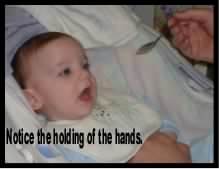 Although this might sound terribly constraining, remember the child doesn’t know it is constraining. If he learns to eat that way, then he will consider it normal to have his hands held away from the food. You might wonder how this will help the child in the long run. He is learning self-control. He is learning what food is for (eating not playing); he is learning to yield to authority.
Although this might sound terribly constraining, remember the child doesn’t know it is constraining. If he learns to eat that way, then he will consider it normal to have his hands held away from the food. You might wonder how this will help the child in the long run. He is learning self-control. He is learning what food is for (eating not playing); he is learning to yield to authority.
The child learns to accept the restriction of his freedom as normal. If done from the beginning, he doesn’t know any different. He expects it. Before long, you can take your hands off the child’s hands, and he will keep his hands off the food. It really works and is easier than we think. Parents simply have no confidence that they can do it or any idea that they should.
I still remember our little daughter when she was learning this. She was very active. She couldn’t keep still. When her hands were held, she learned to accept that. When Mom began to take her hands off of hers, she didn’t keep her hands folded down as one might think, but high in the air moving back and forth. This was fine for us for she kept her hands in the air away from the food (see picture). That was okay too!
3) Toddlers: Walking and dangerous
Those hands of the toddlers can soon reach wherever they want. They walk and jump now. They can bring their hands to the objects they want to touch. They need to very clearly learn limits or they will very quickly get in a lot of danger. Some parents do not understand training at all. They believe that the only way to protect the child is to be with the child on a 24 hour watch. I am amazed to see how dutiful these parents can be. On the other hand, they are just putting off the danger. For a child will learn to sneak away when it gets older. They still haven’t learned to control themselves to do what is right.
Once the child has learned the power of the word ‘no’ from the tap, then everything else simply follows. When appropriate we need to go where the child can go and clearly instruct them what is off limits. Although we might feel there are some items a child could touch but not play with such as a lamp, it is best to have them not touch those objects at all. Clear instructions are important.
Take the child to a room and point out everything that is off limits. Point out the lamps, forbid climbing on bookcase, touching certain knobs, etc. As we point out each item, we need to have the rod in hand and knock it a few times against the floor or something hard so they hear the sound and are reminded of the sting of the rod. One by one go and instruct him. Afterwards, watch him play for a few minutes. He might be tempted to touch some of the things that he is not supposed to touch. At the beginning, just state a clear ‘no’ as he approaches some forbidden object. If he persists in touching, use the rod and sting his hand.
 How hard? The tap that you used when he was six months is not going to be as effective with a two-year-old. How hard do you sting? I first practice on myself so that I am sensitive to its pain. Then I remember every child is different. Some children are more sensitive than others. Others are hardly dazed with a firm swat.
How hard? The tap that you used when he was six months is not going to be as effective with a two-year-old. How hard do you sting? I first practice on myself so that I am sensitive to its pain. Then I remember every child is different. Some children are more sensitive than others. Others are hardly dazed with a firm swat.
A child’s sensitivity is quickly gauged by observing them when using the rod. Thirdly, we need to strike them hard enough to sting. If it is too soft, the child will get defiant as if he had beaten the beast. We should see a humbled heart and change of attitude.
At times we hear the phrase ‘terrible twos.’ It is used by some parents to characterize the open defiance of their two-year-old. They are shocked at some of the things their own child says or does. What initiates this stage is the slow realization that they can exercise their own will. It dawns on them that they have power to make decisions. It is the awakening of their self-awareness.
They see that they can control their mouth and will. In a sense they have identified their own person. Now they can exert their foolishness if allowed. Of course, those parents that have not trained their children will face a little monster. Children manipulate their parents through their cries, actions and temper tantrums, a false sense of being hurt, “tiredness” “pains” and a lot of other things.
A trained child will also discover his own will. We will have a few months of extra expression of defiance, but nothing too spectacular. The rod helps them to follow the regular routines. The parent might be shocked at having to use the rod so frequently on their once well-trained child. They should not be disturbed. Stay on the path. Remember to use the rod hard enough to make a difference. What happens when we use the rod?
The rod used in the right way reminds the child that he cannot get what he wants. It associates the pain of the sting with their disobedience. They find that it is more beneficial to refrain from some naughty action. This is true with getting dressed, eating, going to sleep, going to the bathroom etc. There must be a consistent enforcement of the rules at this stage because the child is learning to exert his will. They will test everything they can think of.
 We should remember, however, that a child at this stage would do things that we have not clearly instructed them on. We have wasted quite a bit of toilet paper when our little one discovered it keeps coming off the roller. Guess what? Another “no, off limits” comes into being to protect the sacred toilet tissue. We need to distinguish between childishness and rebellion. Childishness is when a child does things that are improper but doesn’t know it because there was no clear instruction about it. Rebellion is when they know it is wrong and still do it.
We should remember, however, that a child at this stage would do things that we have not clearly instructed them on. We have wasted quite a bit of toilet paper when our little one discovered it keeps coming off the roller. Guess what? Another “no, off limits” comes into being to protect the sacred toilet tissue. We need to distinguish between childishness and rebellion. Childishness is when a child does things that are improper but doesn’t know it because there was no clear instruction about it. Rebellion is when they know it is wrong and still do it.
Training has everything going for it. It works for you when you have the child eat, put things away or get potty trained. Let’s discuss a few of these items here.
Feeding the child
Perhaps one of the most stressful moments in training is teaching your child to feed himself. The family could take up their dining room carpet. Or the parent can put this training off until the child is much older. We have seen both. The preferred way is for the parent to train the child when he is sufficiently coordinated and begins to show an interest in the process at around 15 months.
 One might think the previous constraint-training is difficult (holding his hands), but once you see how it nicely prepares the child to eat properly by himself, then you might think differently.
One might think the previous constraint-training is difficult (holding his hands), but once you see how it nicely prepares the child to eat properly by himself, then you might think differently.
Training is fun because the rebellious heart of the child is suppressed. Most parents face the uncontrolled foolish heart of the child. When the child is not under control, we can understand why parents might not give the child the freedom to feed himself and just continue to treat the little boy or girl like a baby. However, the toddler is no longer a baby. He needs to be treated as a responsible little boy and girl. The child himself would also like to use all of his newly acquired motor skills.
When the child realizes that he is not to touch or play with the food, he accepts that as normal. So Mom will eventually be able to release the child’s hands and the child will not play with the food. Because of this training, the child will appreciate the opportunity to eat certain finger foods. Later he will enjoy the challenge of learning to eat with a spoon. Let’s be more specific about how to do this.
At around fifteen months (ages differ), the child will be able to begin to eat on his own. There are two actions that need to be trained. The first is the spoon-to-mouth action and the latter is the dig action.
The child first will learn how to bring his spoon to his mouth. We suggest start the training at the end of a meal. When he only has a few bites left, give him a spoon and properly place it in his hand. The parent will put food on the spoon and then guide the child’s hand to the mouth. This of course only works if the child has learned to accept the parent’s guidance. The child will soon want to lift the spoon by himself. The parent will still need to put food on the spoon for him.
The time will soon come when the child wants to ‘dig’ too. This simply means put the food on the spoon. Again start at the end of the meal. He might get more interested in the process than the food. Give him something that is easier to pick up like applesauce or pudding or something sticky. Again guide his hand. The child will learn to both dig and feed. A little guidance from the parent goes a long way in training the child.
Perhaps you have some questions. What if the child accidentally spills foods? Accidents should be cleaned up cheerfully and forgotten. We can certainly caution them ‘Be careful.’ If, after he has mastered this skill, and he purposely spills or makes a mess, he should have his hand stung and then be made to help clean up. Some of your verbal instruction could include things like “We must be careful not to waste the good food God has given us,” or “It is not good to make work for someone else.”
What if the child experiments ‘feeding’ the floor? “Spoon overboard!” Well it will happen. Again we need to distinguish between childishness and disobedience. The first time it happens is truly an honest experiment. We tell the child a calm, “No.” Mention that if he does it again that you will need to use the rod.
Sometimes it helps to put the rod nearby. This is a good reminder not to do it. And of course if the child puts the food on the floor, then sting him on the offending hand with the rod. If we see him regularly misbehaving, then we will simply take away the privilege (freedom) of feeding himself and return to holding his hands.
Since a child makes a bit of noise crying when disciplined, we often put the child by himself in an adjoining room rather than disturb the rest of the family.
Picking up: When the child is more mobile, it gets a bit more difficult to figure out how to train the child to pick up after himself. Don’t be discouraged.
The first thing to keep in mind is to train the child to stay in one room or play area. Let the child play with toys only there. Then it is not so difficult to train the child to clean up. Another help is to limit the toys. We have eight children and have been given a lot of toys over the years. We have to store them away out of sight. Or we simply require him to be put away some toys before taking others out to play. This training, however, needs close supervision. If you allow him to take out so many things at once, he will have an overwhelming job at the end of his playtime. Limiting access to the toys helps prevent this.
If we let the child wander all around, then he will make messes all over the place. Remember the child trained from early on will be used to and even happy to pick up. Don’t pick up for him. If he seems discouraged, just pick things up with him. If he gets rebellious and refuses, we sometimes just take his hand and force it to pick up. This is fortunately rather rare.
Summary
We have found that the child can do far more than given credit for. Any parent can train their child to do anything that they are physically able to do. There are two important parts:
(1) The constraining. We limit the ability of the child to express his own will. We only allow him to do well. The rod is a helpful tool to enforce our wishes.
(2) The training. We train the child to gain the skills he needs to accomplish different tasks. The child doesn’t know what to do or how to do it. We tell him, show him and guide him at first until he is able and willing to do it in a way that pleases us.
In the next session, we will talk more about routines. Routines are closely associated with the training of doing the proper things at the right time. Routines provide a more comprehensive look at what needs to be done and when.
|
Next => Setting up Godly Routines for Young Children
Routines is our key to building training into a child's life. It works with one or ten children.





